Wooden pergola covers offer a stylish and functional solution for enhancing outdoor living spaces, providing shelter from the elements while adding architectural interest. From classic to contemporary designs, these versatile structures elevate any backyard or patio, creating inviting and comfortable areas for relaxation and entertainment.
When selecting a wooden pergola cover, it’s important to consider factors such as the type of wood, design style, and installation requirements. With proper care and maintenance, these covers can provide years of enjoyment and enhance the overall aesthetic appeal of your home.
Types of Wooden Pergola Covers
Wooden pergola covers add a touch of elegance and functionality to any outdoor space. They provide shade, define areas, and create a beautiful focal point. When choosing a wooden pergola cover, there are several types of wood to consider, each with its unique advantages and disadvantages.
Wooden pergola covers provide a stylish and functional addition to any outdoor space. They offer shade from the sun, protection from the elements, and can be customized to complement any decor. For a touch of whimsy, consider a wooden pergola with swing.
This combination adds a playful element to your outdoor oasis, providing a comfortable and inviting spot to relax and enjoy the fresh air. The sturdy construction and durable materials ensure that your wooden pergola cover will withstand the elements and provide years of enjoyment.
Type of Wood
- Cedar: Cedar is a popular choice for pergola covers due to its natural resistance to rot and decay. It is also lightweight and easy to work with, making it a good option for DIY projects. However, cedar can be more expensive than other types of wood.
- Redwood: Redwood is another durable wood that is resistant to rot and decay. It is also a strong wood that can withstand high winds and heavy snow loads. However, redwood can be more expensive than cedar and is not as easy to find.
- Pine: Pine is a more affordable option for pergola covers. It is a softwood that is easy to work with and can be stained or painted to match any décor. However, pine is not as durable as cedar or redwood and may require more maintenance.
- Cypress: Cypress is a durable wood that is resistant to rot and decay. It is also a strong wood that can withstand high winds and heavy snow loads. Cypress is a good choice for pergola covers in coastal areas, as it is resistant to salt water damage.
- Teak: Teak is a premium wood that is known for its durability and beauty. It is a hardwood that is resistant to rot, decay, and insects. Teak is also a strong wood that can withstand high winds and heavy snow loads. However, teak is the most expensive type of wood for pergola covers.
Design Considerations: Wooden Pergola Covers
When designing a pergola cover, several factors must be taken into account to ensure it complements the existing structure and surrounding environment while meeting functional and aesthetic requirements. These factors include:
- Size and shape: The size and shape of the pergola cover should be proportionate to the size and style of the pergola. A too-large cover can overwhelm the pergola, while a too-small cover will not provide adequate protection from the elements.
- Materials: Pergola covers can be made from a variety of materials, including wood, metal, fabric, and polycarbonate. The choice of material will depend on the desired look, durability, and budget.
- Style: Pergola covers come in a variety of styles, from traditional to modern. The style of the cover should complement the style of the pergola and the surrounding landscape.
- Function: The function of the pergola cover will also influence the design. If the cover is intended to provide shade from the sun, it will need to be made of a material that blocks UV rays. If the cover is intended to protect from rain, it will need to be waterproof.
- Budget: The budget will also play a role in the design of the pergola cover. More elaborate covers will cost more than simpler covers.
Styles of Pergola Covers
There are three main styles of pergola covers:
- Solid covers are made from a solid material, such as wood or metal. They provide complete protection from the elements, but they can also block out too much light.
- Lattice covers are made from a latticework of beams or slats. They allow some light to pass through, while still providing protection from the sun and rain.
- Fabric covers are made from a fabric material, such as canvas or vinyl. They are lightweight and easy to install, but they may not be as durable as solid or lattice covers.
Tips for Choosing the Right Design, Wooden pergola covers
When choosing the right design for a pergola cover, it is important to consider the following tips:
- Consider the size and shape of the pergola.
- Choose a material that is durable and weather-resistant.
- Select a style that complements the style of the pergola and the surrounding landscape.
- Consider the function of the pergola cover.
- Set a budget and stick to it.
Installation
Installing a wooden pergola cover is a relatively straightforward project that can be completed in a few hours with the right tools and materials.
Materials Needed
* Pergola cover kit
* Drill
* Screwdriver
* Level
* Measuring tape
* Pencil
* Safety glasses
Steps
1. Assemble the pergola frame according to the manufacturer’s instructions.
2. Measure and mark the location of the pergola cover on the frame.
3. Drill pilot holes into the frame at the marked locations.
4. Screw the pergola cover into place using the provided screws.
5. Check the level of the pergola cover and make adjustments as needed.
Troubleshooting
* The pergola cover is not level. Use a level to check the pergola cover and make adjustments by shimming the frame or adjusting the screws.
* The pergola cover is not securely attached. Check the screws and make sure they are tight. If the screws are loose, tighten them using a screwdriver.
* The pergola cover is leaking. Check the seams of the pergola cover for any gaps or holes. If you find any gaps or holes, seal them with caulk or weatherstripping.
Maintenance
Pergola covers require regular maintenance to ensure their longevity and aesthetic appeal. Proper cleaning, inspection, and preventive measures can extend their lifespan significantly.
Cleaning
Regular cleaning removes dirt, debris, and organic matter that can accumulate on the cover. Use a mild detergent solution and a soft brush or sponge. Avoid using harsh chemicals or abrasive cleaners, as they can damage the finish. Rinse thoroughly with clean water after cleaning.
Inspection
Periodically inspect the pergola cover for signs of damage, such as cracks, splits, or warping. Check for loose or missing fasteners and any signs of rot or decay. Promptly address any issues to prevent further damage.
Extending Life
– Apply a protective sealant or stain to the cover to protect it from moisture and UV rays.
– Trim overhanging branches to prevent leaves and debris from accumulating on the cover.
– Consider using a pergola cover made from weather-resistant materials, such as cedar or redwood.
Benefits of Wooden Pergola Covers
Wooden pergola covers offer a multitude of advantages, enhancing both the aesthetic appeal and functionality of outdoor spaces. They provide shade and shelter from the elements, creating comfortable and inviting areas for relaxation and entertainment.
Enhancing Home Appearance
Wooden pergola covers add architectural interest and depth to homes. They can be customized to complement the style of the house, from traditional to modern, and can be painted or stained to match the existing color scheme. By adding a pergola cover, homeowners can transform their outdoor space into an extension of their living area, creating a seamless transition between indoors and outdoors.
Creating Outdoor Living Spaces
Pergola covers provide a framework for creating outdoor living spaces that can be tailored to specific needs. They can be used to define different areas, such as a dining area, lounge area, or grilling station. By incorporating lighting, furniture, and plants, homeowners can create a cozy and inviting atmosphere for outdoor gatherings or simply relaxing in nature.
Last Point
Wooden pergola covers are a valuable investment for homeowners looking to create outdoor oases that seamlessly blend style and functionality. By choosing the right design and materials, and following proper installation and maintenance practices, these structures can transform any outdoor space into a welcoming and inviting retreat.
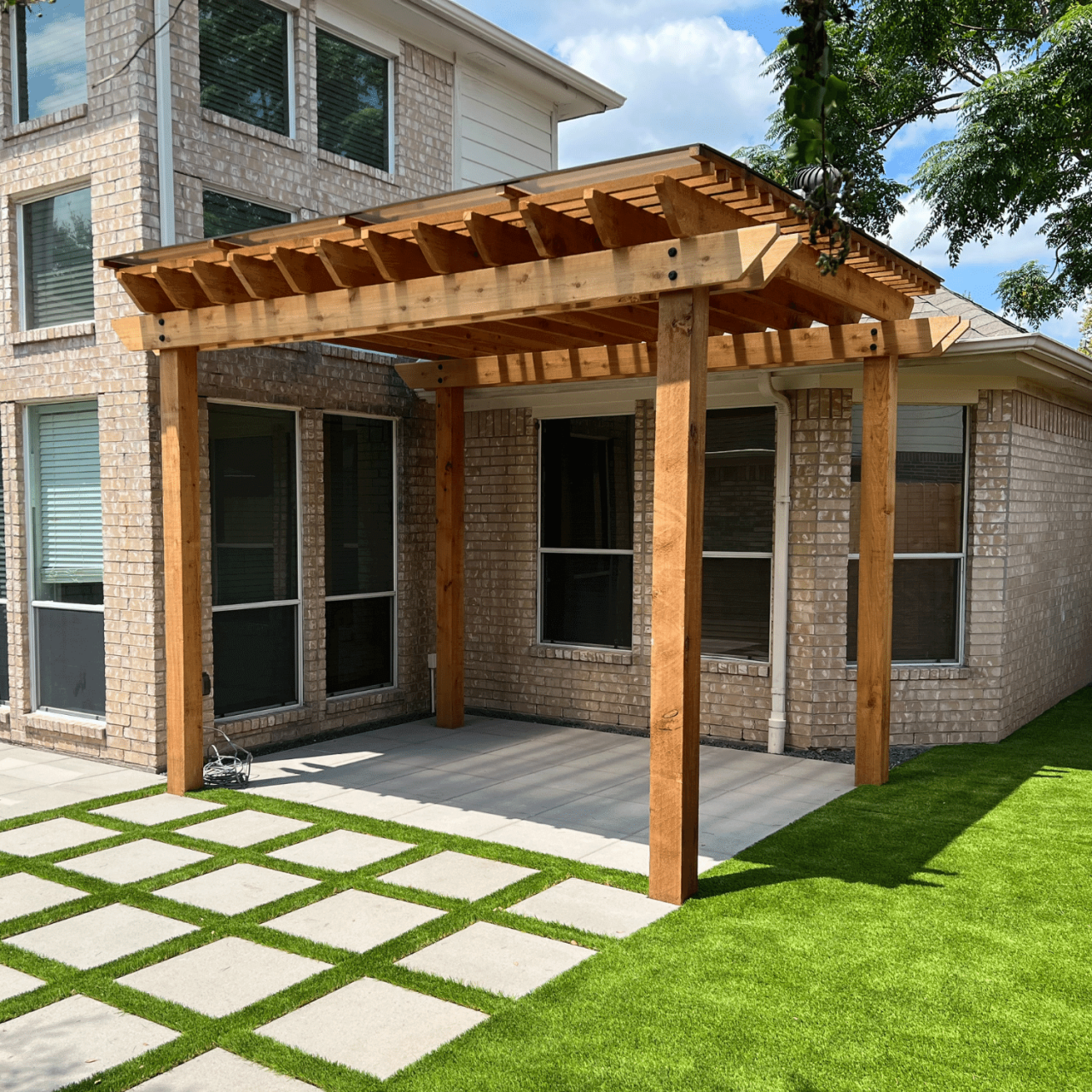
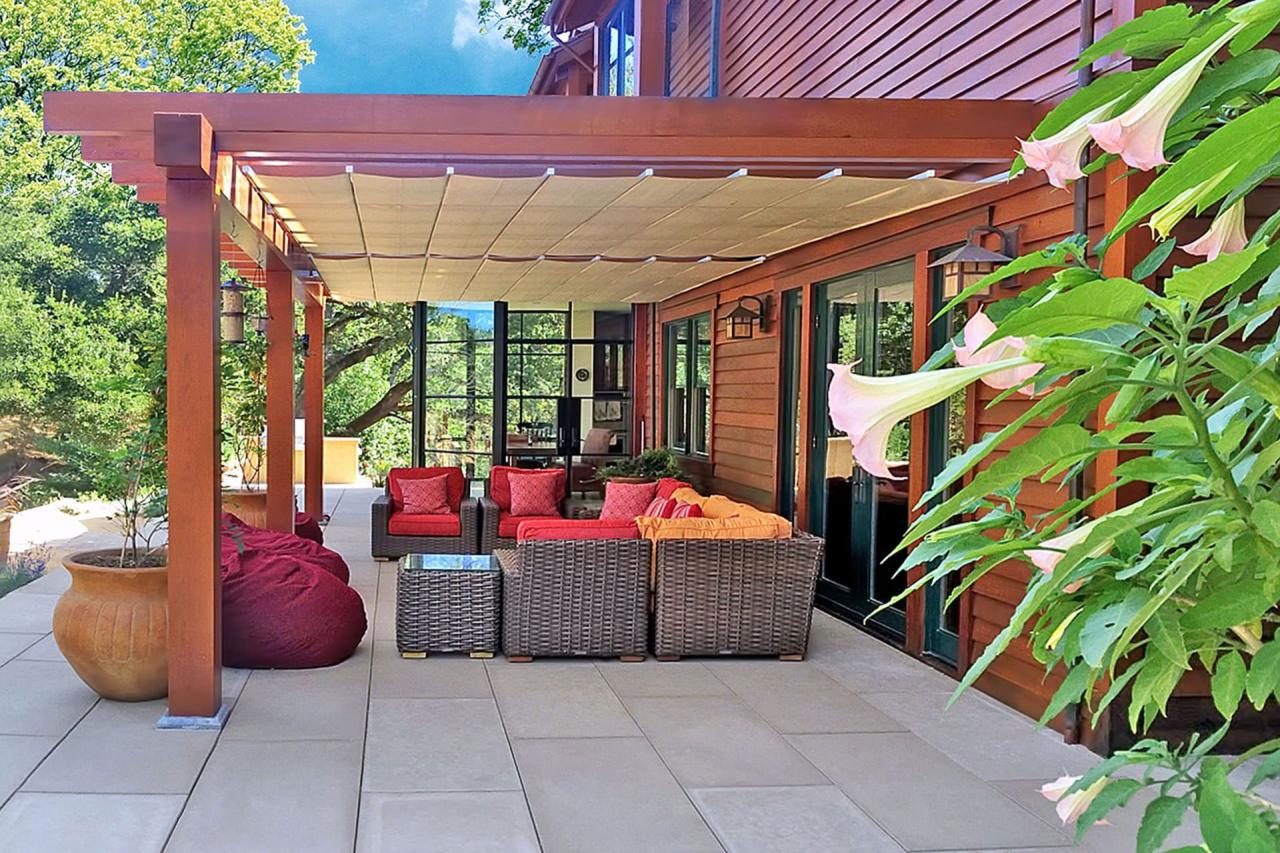



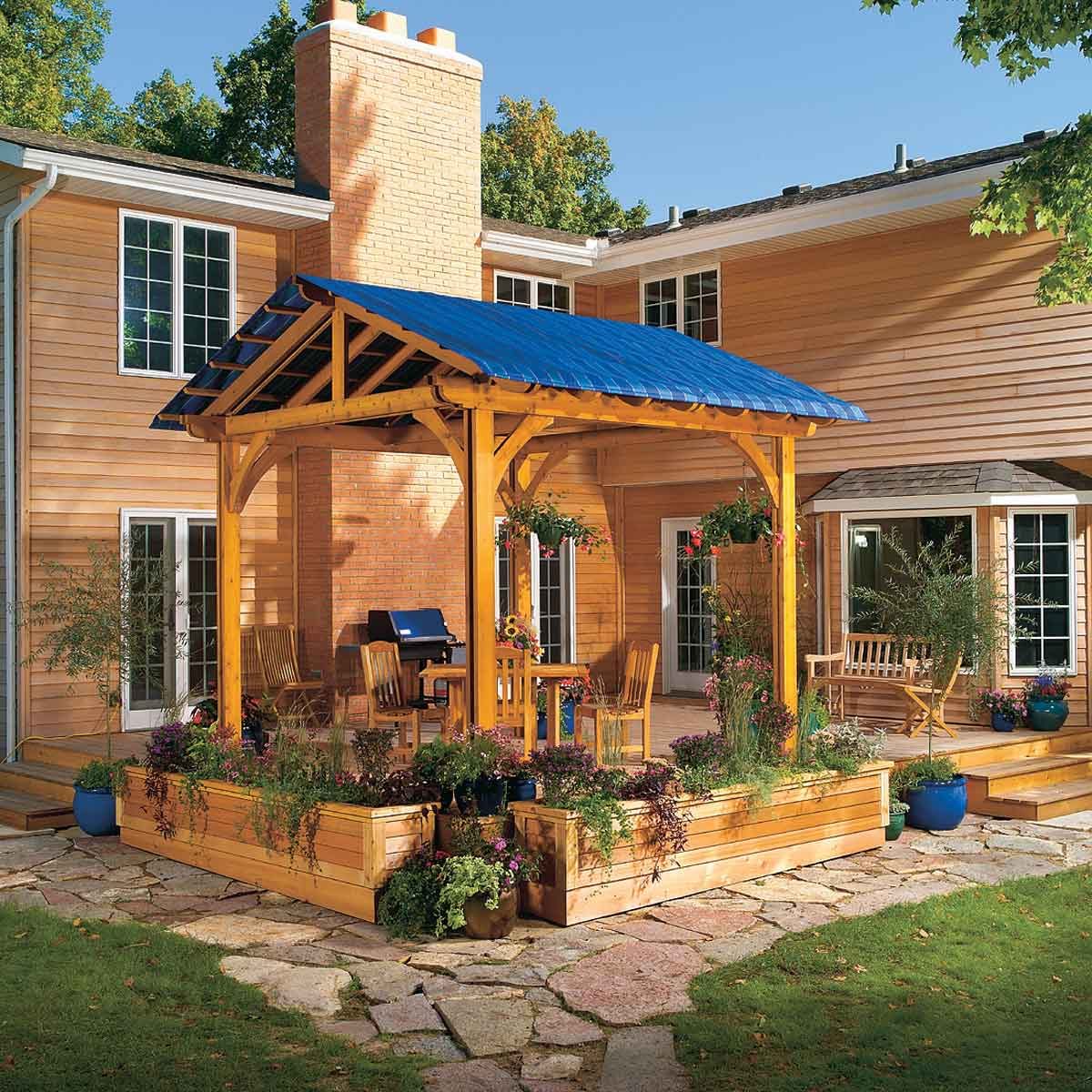
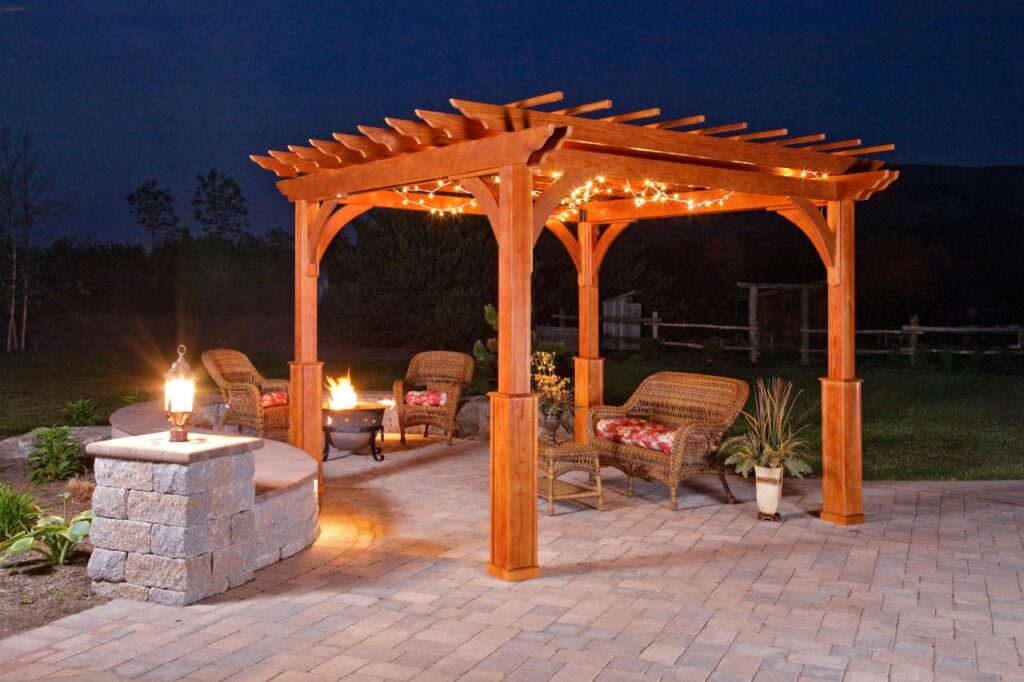
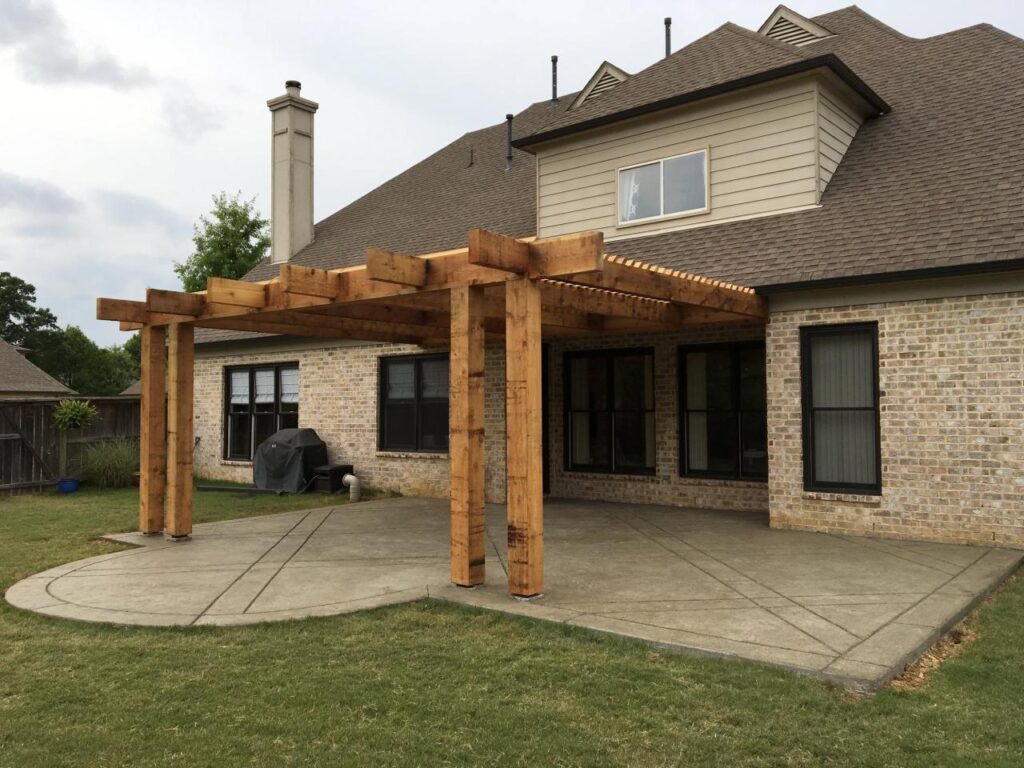
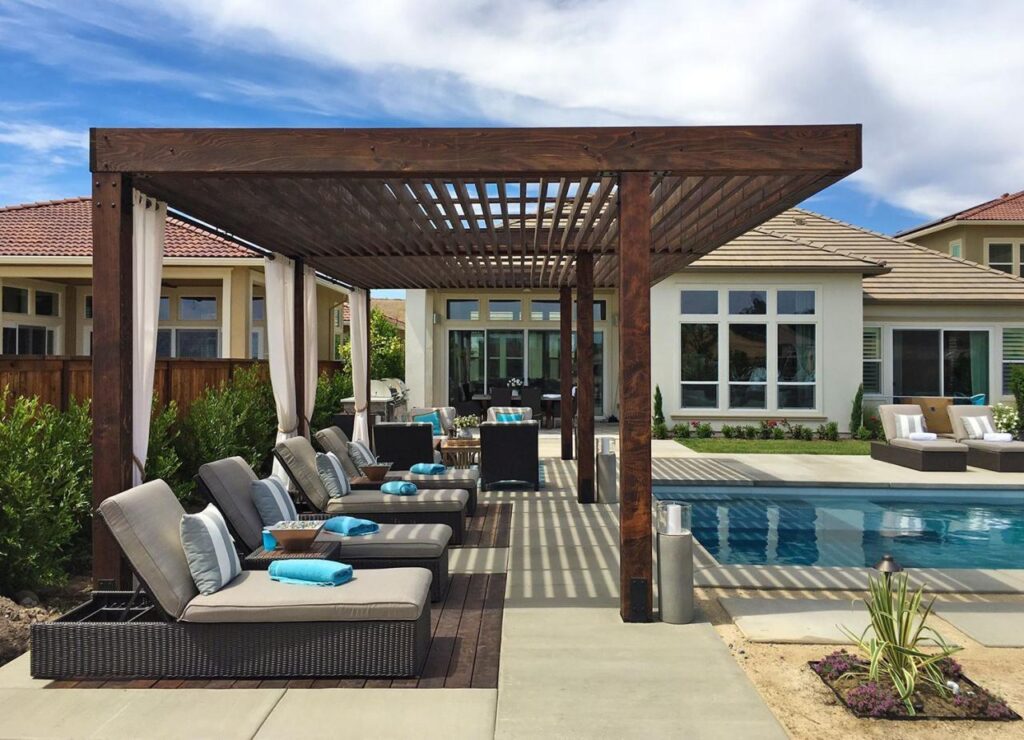

2 thoughts on “Wooden Pergola Covers: Enhancing Outdoor Spaces with Style and Functionality”